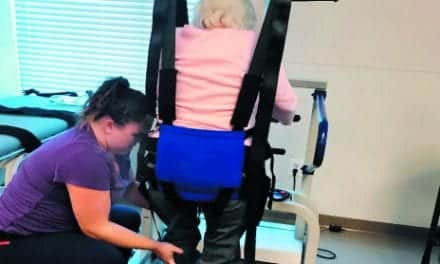April 8, 2008
Robert D. Rondinelli, MD, PhD, medical director of Rehabilitation Services at Iowa Health – Des Moines, has been announced as editor of the American Medical Association (AMA) sixth edition of the Guides to the Evaluation of Permanent Impairment. The guide is reportedly the most widely accepted resource for permanent impairment ratings by physicians, and publishes impairment ratings used as a basis for determining compensation for losses and disablement in Workers’ Compensation and personal injury claims arising from motor vehicle crashes and other injuries.
Rondinelli’s selection marks the first time, a physiatrist (a physician that specializes in disability and rehabilitation) will serve as the guide’s medical editor. Rondinelli is reported to have a varied focus on rehabilitation issues that span stroke, spinal cord injury, and amputation, as well as a background in disability services.
“I felt that the guides weren’t clearly connecting impairment to function for individuals,” Rondinelli says. “I wanted to see how well the ratings would correlate with function.” In the United States, the Guides is most often used by those involved with workers’ compensation because it is often required by the law; however, they are also used by those involved with workers’ compensation and personal injury claims worldwide.
“The Guides evolved out of an anatomically based model, but now they’re moving away from that and more toward a functional base,” he says.
Two major changes were included in Rondinelli’s work on the Guides. The first involved classification. According to Rondinelli, AMA modeled its earlier editions on the World Health Organization’s (WHO) International Classification of Impairments, Disabilities, and Handicaps model, created in 1980. However, the sixth edition of the Guides is modeled after the WHO’s newest model, the International Classification of Functioning Disability in Health (ICF), created in 2001. This model considers those with health conditions as individuals, whose levels of impairment may vary and may be affected by environmental modifiers or personal choices. Rondinelli calls this a “continuum of disablement” with a more contemporary and proactive approach to determining functionality of individuals.
Second, the team attempted to invent a way to do functional assessments – particularly in the musculoskeletal system where physicians relied on self report. The ordinal scale they developed gives a higher or lower score to help physicians determine outcomes. The sixth edition uses a five-level grid for each organ system, making the updated Guides more internally consistent than previous editions.
The Guides sixth edition is anticipated to be adopted as the preferred physician guide by the majority of U.S. Workers’ Compensation jurisdictions as well as key disability systems in Canada, the European Union, South Africa, Australia and New Zealand.
Source: Iowa Health – Des Moines



